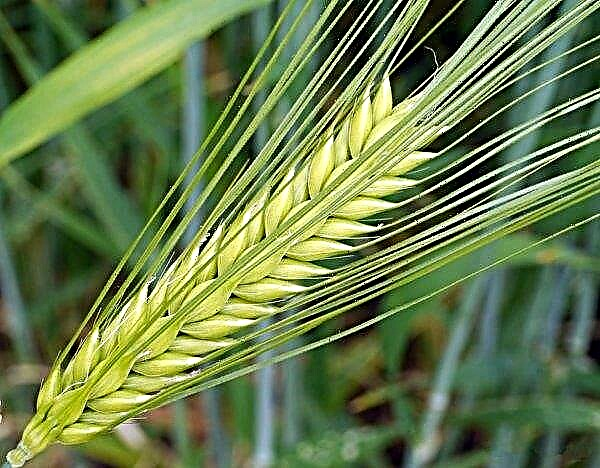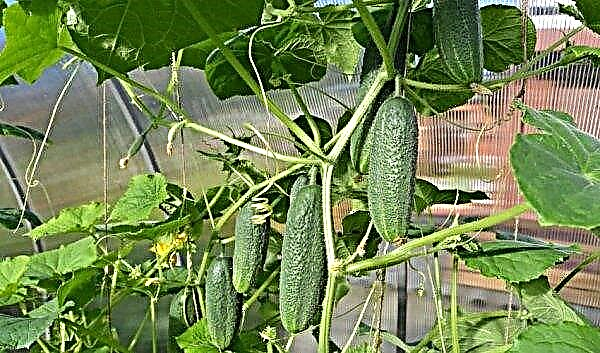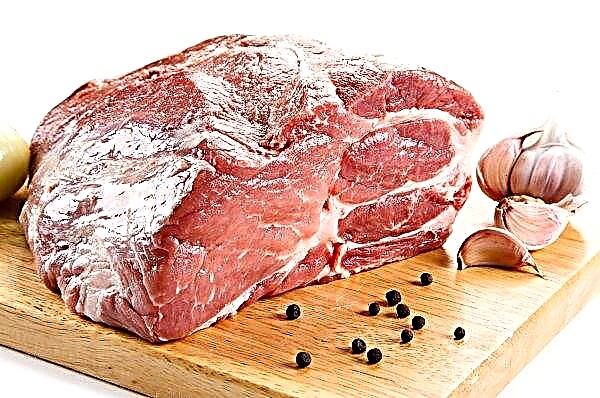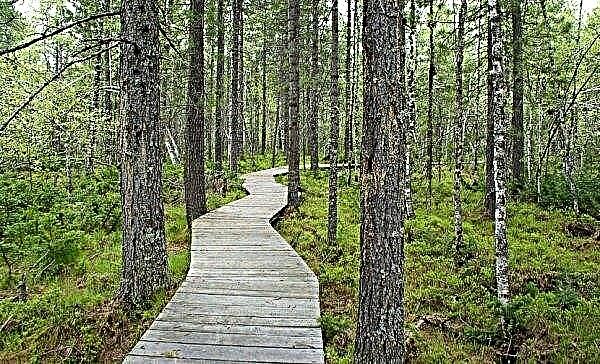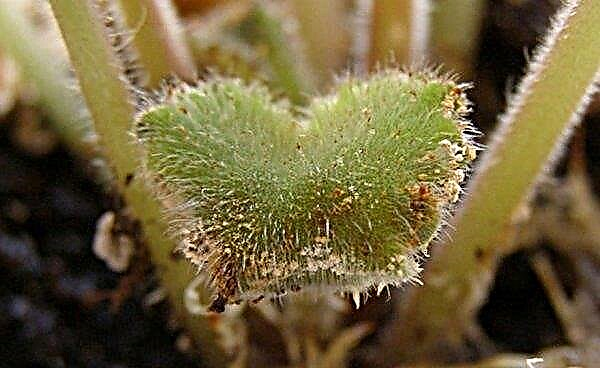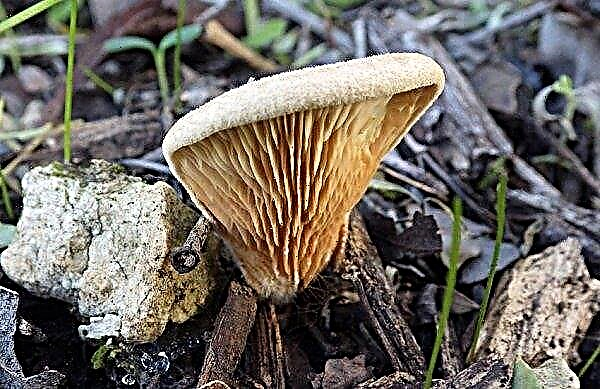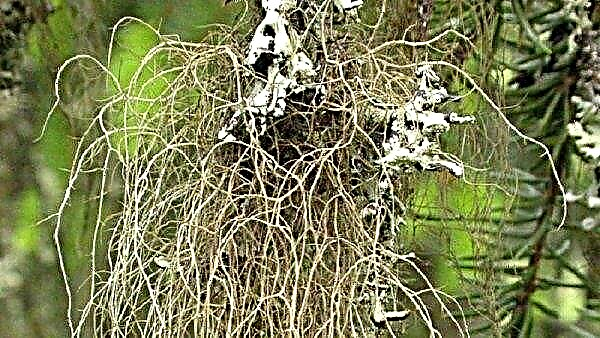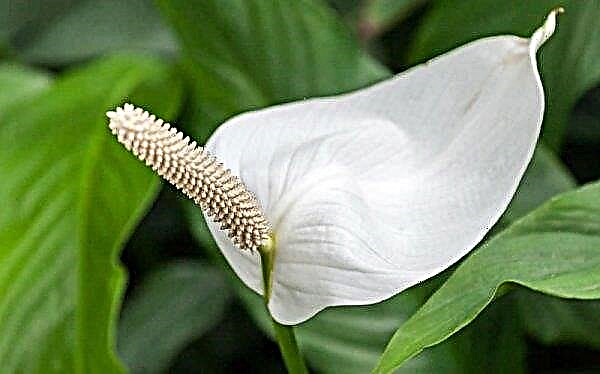The scientific name Strong Annabelle hydrangea arborescens can not clarify much for both beginner gardeners and gardeners, as well as more experienced ones. This is the name of one of the varieties of hydrangea. Many people know about the plant, but in order to plant it in their flowerbed, it is worth at least once to see this magnificent flower with your own eyes. When growing Hydrangea Strong Annabelle, like any other crop, a number of requirements must be followed regarding planting, care and conditions. This will be discussed in the article.
Grade description
Many varieties of hydrangea are known, but frost-resistant varieties have earned the greatest popularity. That is what the relatively new hybrid Ann Strong brand is. In the description of this tree-like variety, it was noted that it grows in the form of a bush with spreading branches, it is different in height up to 1.5 m and almost the same size in width.
The bushes bloom in large lush inflorescences resembling a hat, each of which can be up to 30 cm. The main difference between the flowers of this variety, which can reach 3 cm in diameter, is that, starting to bloom with a lemon-greenish tint, they gradually turn white, and at the end of flowering they acquire a green color. By its appearance, the bloomed hydrangea bush resembles a large ball. Amazingly beautiful inflorescences become larger and more beautiful with age. But young plants are able to delight with their beauty, creating the impression of panoramic flowering.
Did you know? Hydrangea Annabelle and its derivatives have the ability to draw coloring substances from the soil, which sometimes leads to the fact that the flowers of this culture can change color. For example, as a result of interaction with aluminum elements, snow-white inflorescences become bluish.
The leaves of Strong Annabel are green, have an elongated shape, but, unlike many varieties of hydrangea, do not retain their color year-round, but turn yellow in the fall. This variety is deciduous. Bushes bloom from summer to mid-autumn. They are strong, perfectly retain their shape in the wind and rain due to the stiffness of the shoots. This allows the branches of the shrub to stretch upward even in absolutely open areas of the terrain, without bending under the weight of inflorescences. The culture is considered one of the most frost-resistant.
Use in landscape design
Using the universal and at the same time unusually beautiful hydrangea Strong Annabel in landscape design, it is possible to achieve amazing results. After all, it is from her that the long-lasting effect of flowering, elegance in the design of any garden, park, flowerbed, garden plot will depend. When growing hydrangeas along with other varieties of flowering spring and autumn crops, constant contrast can be achieved.
Excellent Strong Annabelle will look on the shore of a small reservoir located on a site or in a park. It is here that hygrophilous hydrangea will be able to "make friends" with other no less hygrophilous cultures. Strong Annabelle Hydrangea should be planted at a sufficient distance from other shrubs and trees, as they will take the necessary moisture from it. Clematis, lilies, spireas and rose bushes can be excellent neighbors for this plant.
Even after flowering ceases, hydrangea is able to please the eye with saturated green leaves for some time. From Strong Annabel bushes, many homeowners prefer to design a hedge, a kind of border. The culture looks spectacular both independently and in composition with other flowers, taller bushes or conifers.
Features of planting and care
The extent to which hydrangea will bloom in the future for a long time depends on the correct choice of planting location, cultivation conditions, soil preparation, its composition, and compliance with all planting rules.
Did you know? Translated from the Greek language, hydrangea means "a vessel with water", which explains the great love of this plant for moisture.
Growing conditions
For the productive cultivation of hydrangea, some requirements for the conditions for its growth must be met:
- The place where the culture will grow should be well lit in the morning and in the evening, during the day it is better for the plant to stay in partial shade. A long stay of the crop in the scorching sun contributes to a significant reduction in flowering volumes and its duration. Excessive presence in the shade will cause the formation of small-sized flowers.
- The growing area must be protected from gusts of wind. Although Strong Annabel is considered one of the strongest and most stable varieties of hydrangea, with constant strong winds it can scatter, break, turn bushes into an untidy sight.

Soil preparation
All varieties of hydrangeas feel better in acidic and slightly acidic soil. It is in such soil that the culture develops as much as possible, its inflorescences are characterized by brightness and saturation.
It is recommended to fertilize any soil six months to a year before planting with peat, organic top dressing, add wood sawdust. Before planting, you need to carefully dig the land, loosen it, remove weeds.Important! In soil with alkaline characteristics, hydrangea can become sick and stop blooming.
Landing algorithm
Hydrangea planting in the ground can take place both in autumn and in spring, when the soil is warm enough, the buds on the plants did not have time to blossom. But in the northern regions, it is recommended to plant culture only in the springtime.
Landing Stages:
- digging pits with dimensions of 50 × 50 × 50 cm;
- the distance between plants should be at least 1.5 m;
- it is recommended to pour a mixture of river sand, compost, peat, fertile soil, leaf humus into the excavated recesses;
- Before planting, you should check the roots of the seedling and cut off damaged, dry and very long. Untangle the entangled plant roots from the container and cut off a little. All root branches should be approximately uniform in length;
- the roots are straightened, the seedling is placed in the hole so that the root neck is at the level of the soil and not sprinkled with soil;
- the roots sprinkled with a 3-centimeter layer of earth are pressed down a little to avoid the formation of voids that can lead to drying of the roots;
- plentiful watering and final falling asleep of a hole with a seedling are made.

It must be remembered that even a slight drying of the hydrangea root system can cause the seedling to take root poorly and will not develop and grow enough in the future.
Important! In order for the roots to take root more quickly, they should be soaked for a period of 2 hours to a day in a heteroauxin solution, and after soaking, immediately plant.
How to care
In order for hydrangea to bloom abundantly and develop harmoniously in the future, it should be properly taken care of: to feed, water, trim and mulch the soil around the bushes. Also, planted plants should be protected for a month from scorching sunlight and heavy rain.
Abundant watering of hydrangea bushes should be carried out with a regularity of 1 time for two days. In the sultry period, this should be done in such an amount that the plants are fully saturated, and a certain supply of water remains on the surface. Later, you can water it once a week, pouring up to 20 liters of water under the bush, with frequent rainfall, such watering can be done much less frequently. Once a month, watering is recommended with a weak solution of potassium permanganate added to the water. This procedure will help strengthen the shoots.
Important! When feeding hydrangeas, nitrogen-based mineral fertilizers should not be abused, as this can affect the color of the inflorescences, reduce the frost resistance of the bushes and cause the death of plants.
Of great importance for hydrangea bushes is top dressing:
- 14 days after planting, superphosphate and potassium sulfur are added;
- during the formation of inflorescences, the bushes are fed with fertilizers on a mineral basis with nitrogen, phosphorus, potassium components;
- at the end of summer - with organic fertilizers, for example, manure.
 After the third top dressing, you no longer need to fertilize the plants, giving them the opportunity to grow stronger, gain strength and prepare for wintering.
After the third top dressing, you no longer need to fertilize the plants, giving them the opportunity to grow stronger, gain strength and prepare for wintering.Mulching the soil around the bushes is carried out after the start of shoot formation. For this purpose, use peat, sawdust or wood chips, compost, which have a layer height of 5 to 20 cm around the bushes, but at the same time avoid contact with the trunks of plants. This procedure eliminates the possibility of overheating of hydrangeas, the appearance of weeds, and increases drought tolerance.
Hydrangea refers to plants that grow magnificently over time. To make the bushes look well-groomed, they need to be cut in the spring and autumn, giving the correct shape. You can start this procedure only 4 years after planting in the ground, since pruning a young plant with intense movement of the juice along the stems can cause wilting.
The following types of pruning are available:
- preventative - removal of damaged and bad shoots;
- anti-aging - 5-year-old specimens remove old stems that inhibit the development of the plant;
- formative - Last year's shoots undergo a shortening procedure for several pairs of buds;
- thinning - remove unnecessary stems without inflorescences.
 All pruning should be carried out with constant regularity in order to preserve the nutrients for plants, to promote the formation of an aesthetically attractive bush, to order the number of inflorescences.
All pruning should be carried out with constant regularity in order to preserve the nutrients for plants, to promote the formation of an aesthetically attractive bush, to order the number of inflorescences.
After flowering, the bushes should be cleaned of dried stems and inflorescences.Although Strong Annabel is a frost-resistant crop, it is better to cover the plants for the winter, removing all unripe leaves, covering the base of the bushes with sawdust, fixing the trunk with pegs and covering the bushes with plastic wrap.
Important! Hydrangea Strong Annabelle is a moisture-loving plant, so in hot and dry periods it must be watered, otherwise the bushes will disappear.
Breeding methods
There are several ways to propagate hydrangea:
- Cuttingswhich are harvested in June-July at an early time. Cuttings are suitable for cuttings, in which there is a piece of last year’s shoot, or shoots that did not have time to lignify and grew this year. The cuttings are separated with 2-3 internodes, treated with a solution of indolylbutyric acid, a growth stimulant and planted in a shady place. Cuttings are deepened into a mixture of sand and peat by a few centimeters under a significant slope. In a month they will take root, and at the end of the summer they will be ready for planting in the soil.

- Layering - green shoots, which are sprinkled with shallow earth in the spring and fixed. The end of the shoot should be visible above the surface of the earth. All the time until the fall, the layers are additionally sprinkled with earth several times and kept moist. The next spring, cuttings are cut off from the main bush and placed separately in the soil in a shady or semi-shady place. Hydrangeas from branches, as well as from cuttings, can be planted at a permanent place of cultivation in 1-2 years. They begin to bloom by 4 years of life.

- Dividing the bush, in which the bush is excavated and divided using suitable tools (secateurs, shovels, axes). After that, individual parts of the bush are ready for planting in the same way as seedlings.

Diseases and Pests
Strong Annabel is resistant to various diseases and pests, but for the purpose of prevention, it is recommended to treat the bushes with a Bordeaux mixture. It should also be borne in mind that with a lack of iron, a disease such as chlorosis may occur.
Iron preparations can help fix the problem. Sometimes hydrangeas are attacked by aphids and spider mites. To overcome pests, you need to use the preparations “Thiophos”, “Kleschevit”, “Fufanon”, etc.
What is the difference from hydrangea Strong Annabel
Hydrangea Strong Annabel is one of the varieties of Annabel.
These two cultures are very similar to each other, but nevertheless, there are differences:
- flowering Strong Annabelle is more splendid and abundant, its flowers are larger;
- Annabelle blooms only 3 summer months, Strong Annabel - the entire summer and almost until mid-autumn;
- Strong Annabel’s stems are much stronger and more stable, they do not require additional strengthening, they are not afraid of wind and rain, which can’t be said about Annabelle, which bends to the ground in windy and rainy weather, becomes disheveled, can be damaged;
- at Annabelle, the leaves protect green freshness before frosts; at Strong Annabel, the leaves begin to turn yellow much earlier.

Strong Annabelle is an amazing plant, characterized by a number of distinctive features. To appreciate the beauty and sophistication of this culture, you need to be able to handle it correctly. And then for almost half a year it will be possible to enjoy this magnificent beauty.





